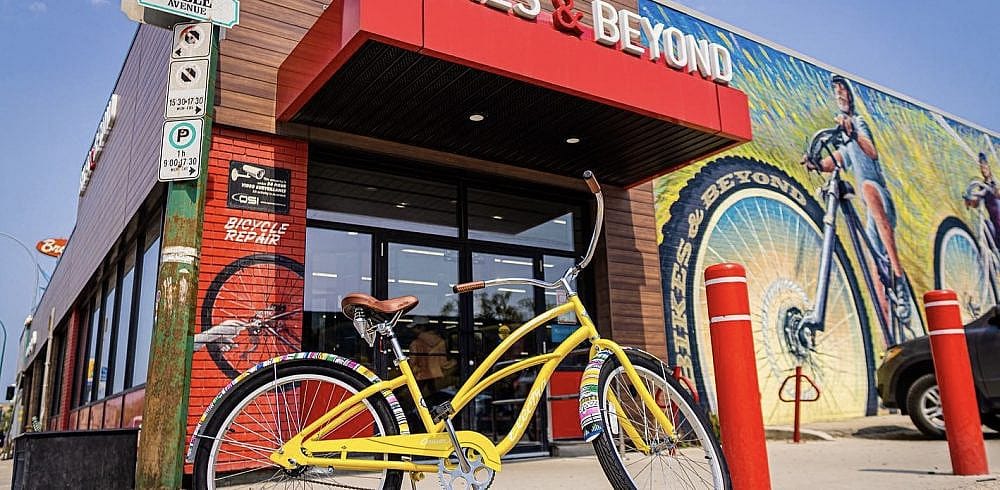8-minute read

CODE Newsletter | Issue #5
These CODE newsletters are meant to inspire you to reflect on your commitment to diversity, equity, and inclusion, find valuable resources to further action and develop skills needed to facilitate bold change.
Written by Kayla Buehler, Marketing Manager & Jess Borys, Communications & Programs Coordinator
With the launch of CODE (Commitment to Opportunity, Diversity and Equity) we have been working internally to find ways to make our content more accessible for all. Over the last few months, our communications and marketing team went through three sessions with Lisa Snider, Senior Digital Accessibility Consultant & Trainer at Access Changes Everything Inc., to learn more about how we can ensure we take the necessary steps to make our content more accessible. We also acknowledge that these things take time and accessibility is ever-changing, so we are committed to continually learning about how we can do better when it comes to our content accessibility.
Each of our three sessions was focused on a specific form of communication, whether it be social media, presentations, newsletters, videos and more. Our team has begun to implement many of the things we took away from our sessions with Lisa and we would love to share some of them with you.
We have put together 9 tips to help make more accessible content. Check them out below.
9 Tips For More Accessible Content
- How accessible is your text?
To ensure accessible and easy to read text, choose common fonts that are more readable than others. For example, san serif fonts (think Arial and Calibri) and 12 point font or bigger to ensure ease of readability for everyone viewing your content. - Font and style choices matter
Like any marketing and design expert, we all like a nice-looking font, but make sure it’s not hard to read! Stick to one or two fonts per graphic (sans serif fonts preferred) and avoid overusing italics, bold and ALL CAPS. You don’t have to avoid altogether, just use sparingly to highlight key details. - Check out that contrast!
Colour is a great way to have your graphics stand out, but if your colours combinations don’t have a strong contrast between background and text, it makes it harder for a user to read. Use tools like Colour Contrast Analyser to check contrast between elements like images, background colours, texts and icons. - #WhatIsCamelCase
Hashtags are a great way to have your content be easily found, but one way to ensure greater accessibility is using CamelCase, meaning for each new word in a hashtag, capitalize it. This makes it easier for tools like a screen reader to be able to read the hashtag. - Love Emojis
Put your hand up if you love using emojis! For many content creators, emojis are a great way to tell a story without using as many characters, but emojis are images and do require you to treat them as such. They require alt text for people who can’t see them and for those who use tools like screen readers. - Picture This
For video content, always provide closed captions as an option. A way to take it a step further though is by including other alternatives viewing options. This includes if you have someone speaking to have them describe exactly what’s happening as the video goes on. For example: “Today we are live on location at The Forks and I am standing just in front of…” - Words Matter
In most cases plain language is always best, you want as many people as possible to be able to read and understand your content. So keep your content short and sweet and where possible use familiar words. (Example: instead of: terminate use: end) - Be Prepared For Requests
Creating beautiful and eye-catching graphics and elements are all part of the job, but always ensure you offer your content with a variety of options. Even when you take as many audiences’ needs into account, you may still encounter requests people may have. Here is an example of what we often include on different communication pieces: “If you require this document in an alternative format, please contact Kayla Buehler at [email protected]” If you are including a similar line, be sure to use size 12 font. - It may seem daunting, but know you can start small
After completing all three sessions with Lisa, our team was feeling a little overwhelmed with the number of ways you should be incorporating more accessible practices into your work. But here’s the thing, yes there is lots to think about, but the more you do and think about ways to make your content more accessible, the more it becomes natural. Pick 2-3 accessible tools and start there. Then begin to incorporate these tools with some of your new content and begin to update old content as you can.
Want to learn more? Access more accessibility resources below:
- Connect with Lisa Snider: Access Changes Everything
- Introduction to Web Accessibility
- The business case for Web Accessibility
- Colour Contrast Analyser
TPGi’s free colour contrast checker tool that allows you to easily determine the contrast ratio of two colours simply using an eyedrop tool. The CCA enables you to optimize your content–including text and visual elements–for individuals with vision disabilities like colour-blindness and low-vision impairments. - Color Blindness Simulator
- Hemingway App
The app highlights lengthy, complex sentences and common errors; if you see a yellow sentence, shorten or split it.
What I’m Reading: The Parisian by Isabella Hammad
Upcoming CODE Events:
- Newcomer Employment Hub 101 | Thursday, April 7
- CODE 101 | Tuesday, April 12
- CODE Conference | Thursday, May 26 – Early Bird Pricing: closes April, 15
April Dates of Importance:
- Sikh Heritage Month
- World Autism Day | April 2, 2022
- Ramadan | April 2, – May 2, 2022:
- Vaisakhi | April 13, 2022
- Good Friday | April 15, 2022
- International Day of Pink | April 13, 2022
- Theravada New Year | April 16, 2022





